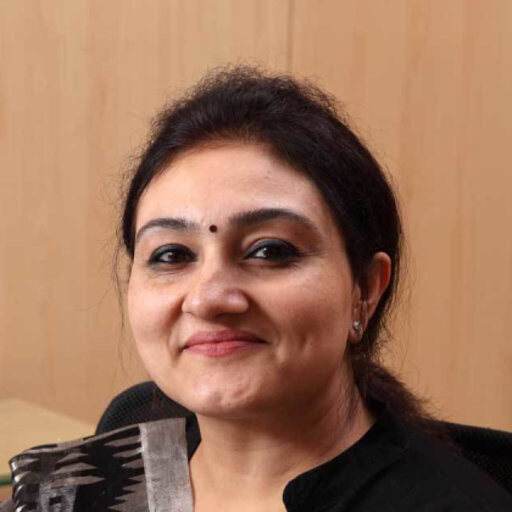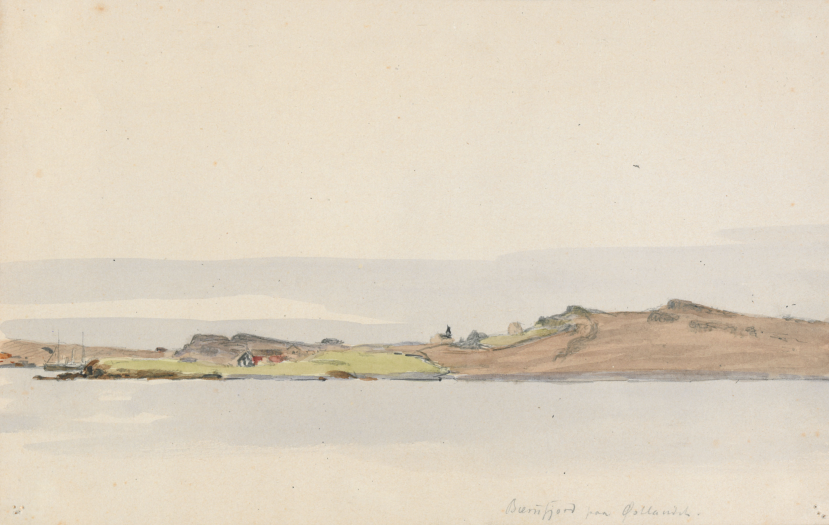
In Iceland’s vibrant heart, a remarkable story of multilingualism unfolds, woven and preserved in unique ways by the Indian diaspora, who mainly reside in the Reykjavík Capital Area but also throughout the country. Iceland, a country once culturally relatively homogenous, has experienced rapid population growth in recent decades due to immigration, leading to a more diverse population. In this context, India’s linguistic diversity forms a vibrant and expansive tapestry, difficult to imagine with Iceland’s tight-knit yet diversifying society.
India’s linguistic landscape in Iceland
India comprises 28 states and 8 Union Territories, largely formed on a linguistic basis. According to the Embassy of India in Iceland, families from approximately 22 Indian states currently reside in Iceland, which is the focus of this article. However, this does not imply that only 22 Indian languages are spoken in India. Each Indian state is inherently multilingual, making the true count of Indian languages in Iceland even more fascinating. To accurately explore this, we must consider not only the states of origin but also the multilingual nature of the communities within them. While not comprehensive, this article offers an overview of the diverse languages of India spoken by the Indian community in Iceland.
This linguistic diversity of India is not merely about communication; it is about preserving centuries of cultural knowledge, artistic expressions, and human experiences. Each language carries within it, unique ways of understanding the world, from the mystical verses of ancient language Sanskrit to the contemporary adaptations of urban influences.
From the snow-laden valleys of Kashmir to the tropical shores of Kanyakumari, from the western deserts to the eastern rainforests, India's languages tell the story of a civilization that has always celebrated diversity. For the Indian diaspora in Iceland, these languages are more than mere tools of communication - they are bridges connecting their past to their present, their roots to their new home.
A journey through India's linguistic landscape
India's languages are living chronicles of its diverse ancestry, broadly classified into four major families: Indo-Aryan, Dravidian, Daic (encompassing Austro-Asiatic and Tibeto-Burman families), and Andamanese. The Indian Constitution's Eighth Schedule recognizes 22 official languages, while 11 languages hold the prestigious status of Classical languages – a testament to their role in preserving millennia of knowledge and culture.
Our journey begins from the north of India, in Jammu and Kashmir, where five official languages – Kashmiri, Dogri, Urdu, Hindi, and English – coexist with regional tongues like Punjabi, Pahari, Gojari Shina, and Pashto. This land of Pashmina and saffron exemplifies how languages interweave with cultural heritage.
Moving southeast, we arrive in Himachal Pradesh, a state nestled in the foothills of the Himalayas. Hindi is the official language, but the majority speak Pahāṛī, which belongs to the Indo-Aryan family. Pahāṛī, also known as Himachali, consists of several dialects, including Bharmauri, Chambeali, Kangri, Mandeali, etc. from the Hindi group; Bhateali, Bilaspuri from the Punjabi group; and Kinnauri, Lahauli from the Tibeto-Burman group.
Further southeast lies Uttarakhand, where spirituality meets natural splendour. It maintains Hindi as its official language while embracing Sanskrit as its second official tongue. In a unique initiative to preserve this Classical language, each district hosts an ‘Ādarśa Sanskrit village’ where the ancient language flourishes alongside regional dialects like Garhwali, Kumaoni, Jaunsari, among others.
South of Himachal Pradesh is Punjab, the ‘wheat basket of India,’ where Punjabi written in the Gurmukhi script is the official language and is spoken in over 30 different regional dialects. Haryana, once a part of Punjab, has Hindi as its official language and Punjabi as a recognized second language. The regional dialects are collectively known as Haryanvi, with Bangru and Ahirvati being the most prominent.
Delhi, India's capital, stands as a linguistic melting pot where Hindi is the official language, with Punjabi and Urdu as secondary languages. Due to migration from various states, Delhi’s linguistic landscape is a blend of Hindi, Punjabi, and Urdu, enriched by regional influences. This creates a unique urban dialect that reflects its cosmopolitan character. This linguistic fusion mirrors the city's role as a cultural crossroads.
Uttar Pradesh, a state that is home to the world-renowned Hindu pilgrimage Kumbh Mela, has Hindi as its official language, with regional variants such as Awadhi, Dehati, Khariboli, and Bhojpuri. Urdu serves as the second official language. East of Uttar Pradesh lies Bihar, where Hindi is the official language, Urdu is secondary. Out of the spoken languages in Bihar, till the 19th century, Maithili was seen as a dialect of Hindi but later was given the status of a separate language in the Eighth Schedule of the Indian Constitution. Some of the popular dialects spoken include Magahi, Angika, etc.
In West Bengal, Bengali is the official language, with its refined literary form, Sādhubhāṣā, and the everyday spoken form, Caltībhasa. This demonstrates how a single language can adapt to different social contexts. Bengal, a land embodying the feminine energy of power—Śakti—that empowers, creates, upholds righteousness, and vanquishes evil, is renowned for its grand celebration of Durga Puja. This annual festival, commemorating Goddess Durga’s victory over the demon Mahishasura, has been honored by UNESCO as an Intangible Cultural Heritage of Humanity. Bengali also belongs to the classical languages of India.
In Assam, a lush northeastern state renowned for its premium tea and Muga silk, Assamese (Asamiya) flourishes as both an official and classical language, with dialects like Kamrupi and Goalparia. The state of Jharkhand showcases remarkable linguistic diversity with languages from Indo-Aryan, Munda, and Dravidian families coexisting harmoniously. Hindi is its official language and multiple regional languages - Santali, Angika, Bhojpuri, Ho, Kharia or Khadiya, Khortha, Kurmali, Khurukhu or Kurukh, Magahi, Maithili, Mundari, Nagpuria, Bengali, Odia, and Urdu - have been given the status of second official languages.
Odisha, a state that is home to the UNESCO-listed Konark Sun Temple, recognizes Odia as its official language. It is spoken in different dialects belonging to Hindi, Dravidian and Austro-Asiatic families. Odia is also recognised as a classical language. Madhya Pradesh, India's second-largest state, known for the UNESCO-listed Khajuraho temples, has Hindi as its official language, with regional dialects such as Bundeli, Sindhi, Gondi, and many others. Rajasthan, India’s largest state, also recognizes Hindi as its official language, while Rajasthani dialects like Marwari, Mewari, Dhundhari, among others. thrive. It is known for the UNESCO-listed six Hill Forts spread across the Rajasthan state.
Gujarat, a state known for its entrepreneurial spirit and festivals, has Gujarati as its official language, with dialects such as Kathiawadi, Surti, and Charotari. Maharashtra, India's third-largest state, known for the UNESCO-listed Ajanta and Ellora caves, has Marathi as its official language, spoken in several dialects, including the widely used Deshi Marathi. Marathi shares linguistic similarities with Dravidian languages like Kannada and Telugu and holds Classical language status.
In the southwestern coastal state of Goa, Konkani is the official language, with Marathi, English, and Portuguese also spoken. It is known for the UNESCO-listed historic churches and convents. Karnataka, a state that is home to UNESCO-listed Hampi region and the coffee plantations across the Karnataka state, has Kannada as its official and Classical language, with regional languages such as Tulu, Malayalam, Tamil, Konkani, and Urdu also spoken.
Kerala, a state known for the indigenous ancient medical science Ayurveda and the martial art Kalarippayattu, recognizes Malayalam as its official language. It is also a Classical language having various dialects influenced by Tulu, Kannada, Tamil, Syriac, Latin, Urdu, and Arabic. Tamil Nadu, a state that is home to UNESCO listed temples, has Tamil as its official and Classical language, with dialects influenced by Malayalam, Kannada, and Telugu. The Linguistic Survey of the state Tamil Nadu has documented twenty languages in the State including languages which combine the Indo-Aryan family with Dravidian syntax like Saurashtra, Thanjavur Marathi, and Vagriboli.
Andhra Pradesh, India’s state known as ‘The Rice Bowl of India’, has Telugu as its official language, which has also a status of a classical language, with dialects like Rayalaseema, Kosthaandhra, Kalingandhra, and Telangana Telugu. Telangana, India’s youngest state, has Telugu as its official language and Urdu as its second official language, influenced by Tamil and Kannada languages.
A tapestry of living languages
As you embark on your own journey through India, whether physical or cultural, please remember that each word you encounter is a thread in this grand tapestry of human expression. Welcome to a land where languages are living heritage, where dialects are doorways to distinct worlds, and where every conversation carries the weight of centuries of cultural evolution. As India’s tapestry of living languages already resonates in Reykjavík and beyond, it weaves together past and present, preserving a global legacy of diversity for generations to come.
References
Office of the Registrar General & Census Commissioner, India. (n.d.). Linguistic survey of India. Ministry of Home Affairs, Government of India. Accessed on 24 February 2025, from https://censusindia.gov.in/census.website/data/LSI
Grierson, George Abraham. Linguistic Survey of India. Vol. 1, Government Printing, 1927.
Indian Culture, https://www.indianculture.gov.in/rarebooks/linguistic-survey-india-vol-i-0. Accessed on 24 February 2025.
Grierson, G. A., editor. Linguistic Survey of India, Vol. 3, Pt. 3. Motilal Banarsidass, 1904.
https://archive.org/details/in.ernet.dli.2015.42221. Accessed on 24 February 2025.
National Portal of India, Government of India. (n.d.). Linguistic survey by Census of India. Retrieved on 24 February 2025 from https://www.india.gov.in/linguistic-survey-census-india
Image
Bhasha Sangam - Celebrating the Linguistic Diversity of India. National Portal of India https://www.india.gov.in/spotlight/bhasha-sangam-celebrating-linguistic-diversity-india




